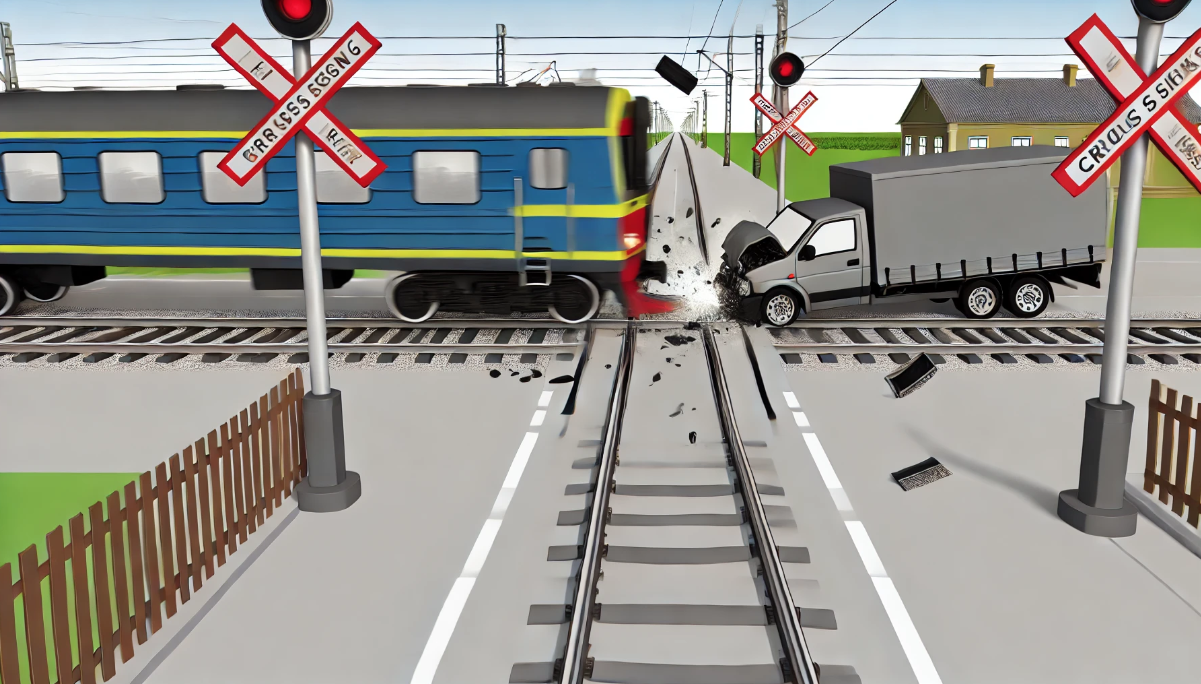Train accidents involving vehicles are among the most devastating on our roadways. Given the immense speed and weight of a train, it can take over a mile for it to come to a complete stop. This means that the consequences of any collision with a train are often severe, leading to significant injuries or even fatalities.
In this article, we explore the key factors that determine liability in such accidents and why both drivers and rail companies have critical roles to play in ensuring public safety.
The Importance of Safety at Railway Crossings
Railway crossings are designed to protect motorists and pedestrians from oncoming trains. Safety measures typically include:
- Crossing Bars: These barriers drop down to block the road when a train is approaching.
- Flashing Lights: Bright lights that alert drivers to stop.
- Audible Warnings: Sounds like bells or horns that warn of an approaching train.
However, when these safety measures fail or are not present, the risk of accidents increases significantly.
Analyzing Liability: Driver vs. Railway Company
In a collision between a train and a truck, as seen in the video analyzed by Chuck Bell, Esq., liability can often be shared between the driver of the vehicle and the railway company.
- Driver’s Responsibility:
- Failure to Observe: Drivers are expected to be vigilant at railway crossings, watching for any signs of an oncoming train. Failure to observe these signals can lead to devastating consequences.
- Negligence: If the driver ignores warnings such as flashing lights or crossing bars, they could be found at fault for the accident.
- Railway Company’s Responsibility:
- Safety Measures: Rail companies have a duty to implement and maintain effective safety measures at crossings. This includes functioning crossing bars, flashing lights, and audible warnings.
- Negligence: If these safety measures are absent or malfunctioning, the railway company may be held liable for any resulting accidents.
A Case of Shared Liability?
In many train vs. truck accidents, both parties may share liability. For example:
- Driver Liability: The truck driver could be partially responsible if they failed to heed warnings or attempted to cross the tracks when it was unsafe to do so.
- Railway Liability: The railway company could also bear responsibility if safety measures were insufficient or not functioning properly at the time of the accident.
This shared liability can complicate the legal process, requiring careful investigation and expert testimony to determine the extent of each party’s responsibility.
Train vs. truck collisions are complex cases that often involve significant injuries and complex liability issues. Both drivers and railway companies must take their responsibilities seriously to prevent such accidents. If you’ve been involved in a railway crossing accident, it’s crucial to seek legal advice to understand your rights and the potential liabilities involved.
At Bell & Bell, P.A., we are dedicated to helping accident victims navigate these challenging cases and securing the compensation they deserve.


